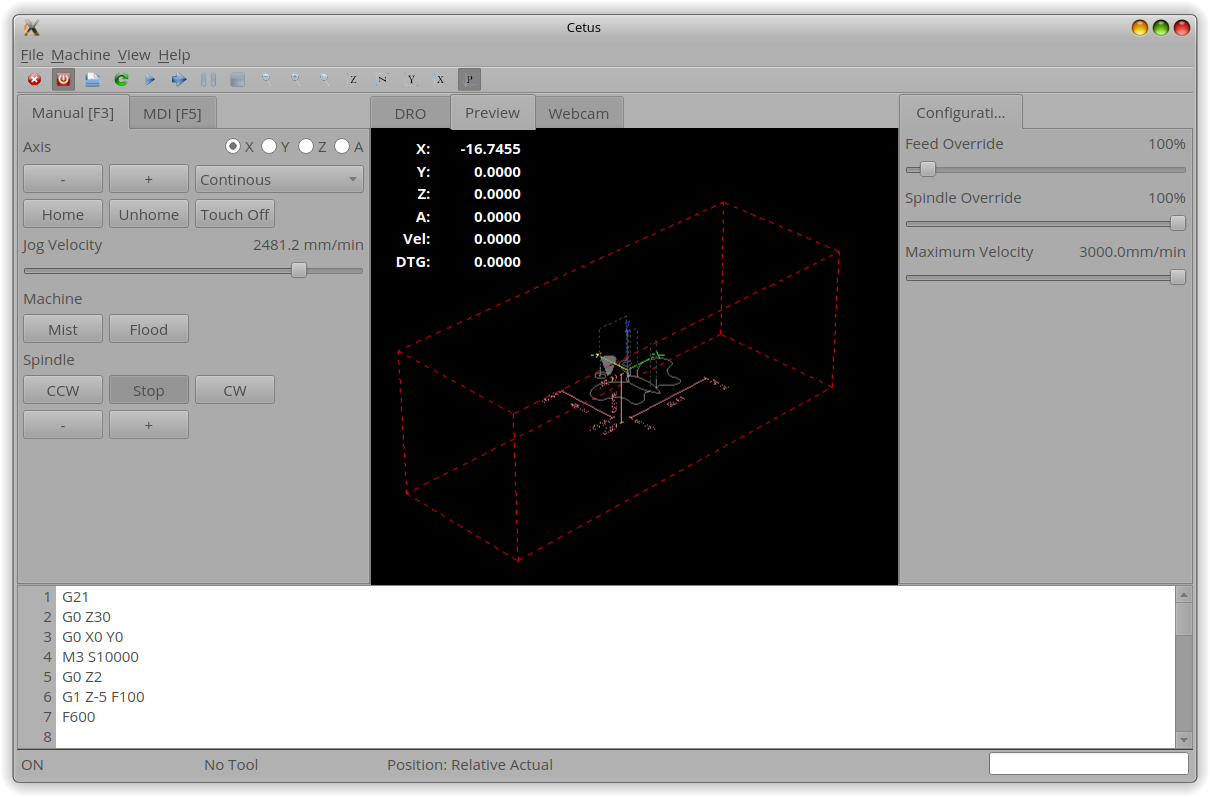Since so many folks seem to want the feature, but almost no one is using it, what is needed to get jog-while-paused working? First, you need to have the jog-while-paused code in your build. With Machinekit, the feature is in all current packages, but with LinuxCNC you'll need to dig around for the proper branches (check the dev-list archives around the date of the video above, Oct. 2013). This adds new offset pins to motion that provides for the jog-while-paused functionality.
The next piece is some HAL logic to drive the new pins. There's a simulation example provided with Machinekit (the sim.axis.jog-while-paused9 configuration) which includes some custom UI and HAL code to get jog-while-paused working.
So...what's really missing is just some real-machine example configurations and perhaps a bit of a HOWTO with instructions on getting everything working. If you've been itching for this feature, why not try out the simulation config. If you like how it works, merge the jog-while-paused changes into your machine setup. Remember to take notes and share your results. Once a few brave souls blaze the trail, I'm sure lots more will follow, and this is a great way non-programmers can help out with the project.

